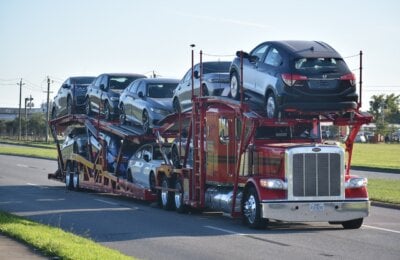
Reading Time: 12 minutes
How Autonomous Trucks are Revolutionizing Auto Shipping
Hey there! Ever think about the future of auto shipping? Do you wonder how it may be revolutionized by autonomous trucks? Yes? Well then, you’re in the right place! In this article, we’ll drive into the exciting world of autonomous trucking. Hop on, and explore the incredible opportunities and advancements it brings to the industry.
Picture this! Long-haul trucks driving down the highway. Not only are they guided by sophisticated technology, but also there is no driver behind the wheel. It sounds like something out of a science fiction movie, but it’s actually becoming a reality. Autonomous trucks, also known as self-driving trucks or driverless trucks, are shaping the future of auto shipping.
Grab a cup of coffee and join us as we explore the following topics.
- The market projections.
- Efficiencies.
- Impact on jobs and the economy.
- Technological advancements.
- and the paradigm shift happening in the logistics sector due to autonomous trucks.
Get ready for an exciting journey into the world of autonomous trucking in auto shipping. Discover how it’s set to transform the car shipping industry as we know it.
Join the future now!
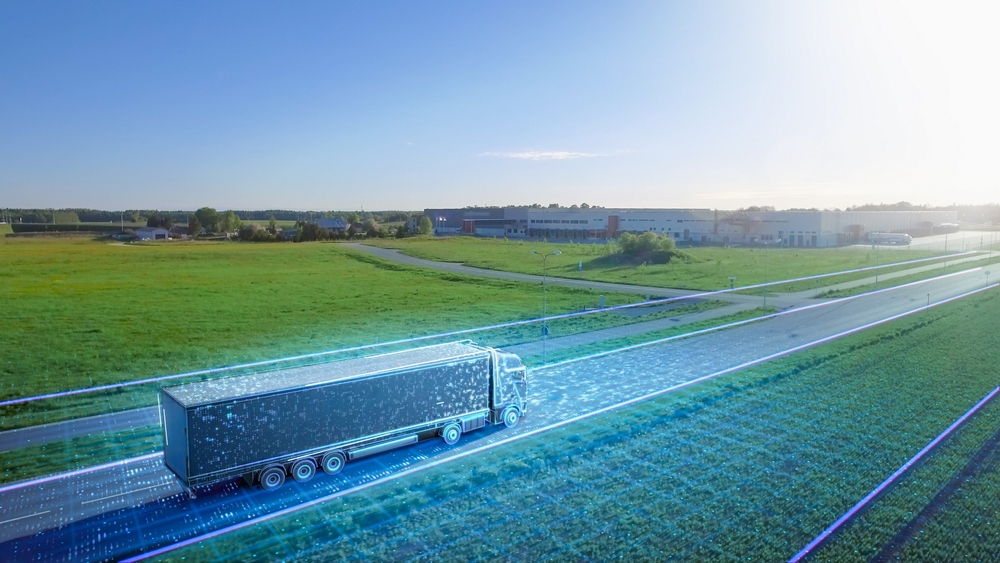
Autonomous Trucks in Auto Shipping | Market Projection and Trends
Autonomous Trucks in Auto Shipping | Market Size Forecast
The future of autonomous trucking looks promising. Certainly, we can expect significant market growth projected in the coming years. According to industry experts, the autonomous truck market size is expected to reach a staggering USD 8,576.29 billion by 2030. This exponential growth can be attributed to several factors. As shown above, these include technological advancements, along with evolving consumer demands.
Shortage of Qualified Truck Drivers
One of the key driving forces behind the rise of autonomous trucks is the shortage of qualified truck drivers.

Currently, there is a shortage of approximately 50,000 qualified truck drivers in the United States alone. This shortage is causing disruptions in the trucking industry.
Besides that, it also hinders its ability to meet growing demand.
Ready to take a deep dive into the future of road trips and auto transportation? From green technologies to the booming industry revenue and a look at what the future holds, our latest guide covers it all. Don’t miss out on this comprehensive Road Trip Guide that will revolutionize how you think about hitting the open road.
Potential Market Growth | Autonomous Trucks in Auto Shipping
The global market for autonomous trucks is expected to witness substantial growth in the coming years. It is projected to grow from $2.0 billion in 2021 to $4.3 billion by 2026. This growth can be attributed to the increasing adoption of autonomous trucking technologies by major trucking companies and logistics providers.
Impact of COVID-19
The COVID-19 pandemic has had a significant impact on many industries, including the trucking industry. However, it has also accelerated the adoption of autonomous trucking due to the surge in e-commerce deliveries.
As consumers increasingly turn to online shopping, the demand for more efficient and cost-effective shipping methods has grown. Autonomous trucks have emerged as a viable solution to meet this demand.
“The rise of autonomous trucking is driven by the surge in e-commerce deliveries during the COVID-19 pandemic.”
The implementation of autonomous trucking technology has allowed for faster and more efficient deliveries. As a result, minimizing human contact, and reducing the risk of virus transmission. This makes autonomous trucks an attractive option for companies looking to adapt to the changing landscape of the transportation industry.
To learn more about the future of autonomous vehicles, check out Self-Driving-Cars | What the Future Looks Like for Drivers.
Autonomous Trucks in Auto Shipping | Efficiencies and Cost-Saving Opportunities
Autonomous trucks are revolutionizing the auto shipping industry by offering numerous efficiencies and cost-saving opportunities. Let’s take a closer look at how they are transforming the way goods are transported.
Operating Cost Reduction
Implementing autonomous trucks can lead to a significant decline in operating costs. This is primarily because autonomous trucks eliminate the need for human drivers. And guess what? Humans require compensation, benefits, and rest breaks, trucks don’t!
By replacing human labor with autonomous technology, the cost of operating trucks can be reduced by approximately 45%.
According to a study by Uber Advanced Technologies Group, autonomous trucks have the potential to save the US for-hire trucking industry between $85 billion and $125 billion. These savings come from lower labor costs, increased fuel efficiency, reduced insurance premiums, and improved vehicle maintenance.
With autonomous trucks, companies can optimize routes, improve fuel economy, and minimize downtime. As can be seen, there is substantial cost savings involved.
Considering an RV adventure soon? Before you hit the road, it’s essential to understand the economics behind RV transport. Check out our in-depth analysis on RV Shipping vs. Driving Costs to make an informed decision that suits your budget.
Increased Freight Capacity | Autonomous Trucks in Auto Shipping
Another benefit of autonomous trucks is the potential for increased freight capacity. By using autonomous technology, trucks can be programmed to drive closer together. As a result, the space needed between vehicles is decreased. This can lead to better utilization of existing infrastructure. It also sees to increased overall efficiency in the transportation of goods.
According to a report by the American Transportation Research Institute, autonomous trucks could increase freight capacity and reduce costs in logistics. The report suggests that autonomous trucks could help reduce congestion and enhance freight efficiency by allowing for platooning. This is a technique in which multiple trucks travel closely together. Note that this takes advantage of the aerodynamic benefits, and reduces fuel consumption.
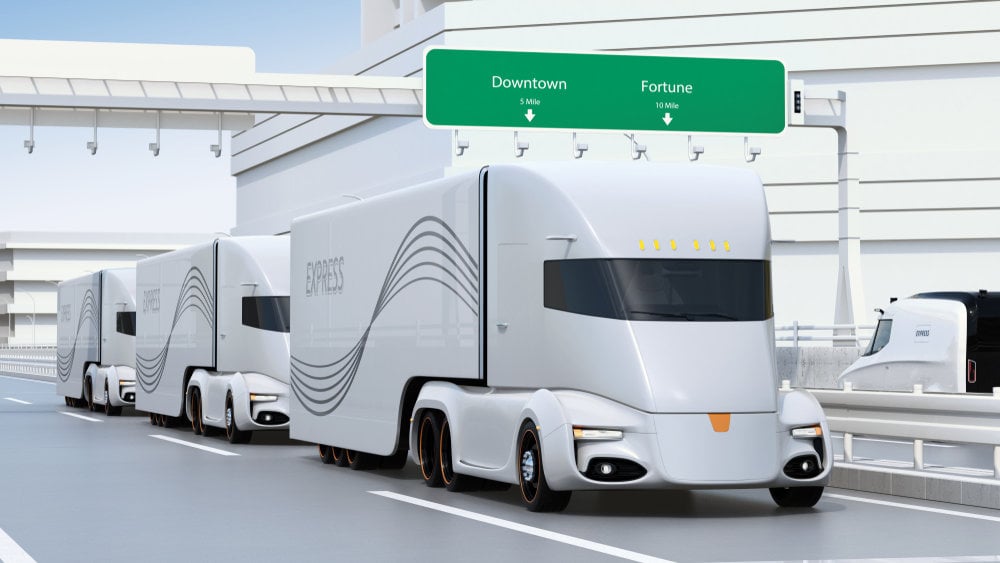
Vehicle Transportation Tips | Smooth & Streamlined Relocations
Revenue Generation
Besides cost savings, autonomous driving has the potential to generate significant revenue. According to a report by McKinsey & Company, by 2035, autonomous driving in the trucking industry could generate $300 billion to $400 billion in revenue.
With autonomous trucks, companies can optimize their operations, streamline supply chains, and accelerate delivery times. This increased efficiency can lead to more business opportunities and higher revenues. Additionally, autonomous trucks can operate 24/7! This eliminates the restrictions of driver working hours. The result is a further increase in revenue generation potential.
What do you learn from this? Well, autonomous trucks offer a range of efficiencies and cost-saving opportunities in the auto shipping industry.
- Reduced operating costs.
- Increased freight capacity.
- Generating additional revenue.
- Just a few ways autonomous trucks are revolutionizing the way goods are transported. The future of auto shipping now looks: faster, more efficient, and more economical.
“The implementation of autonomous trucks will lead to improvements in operating costs and increased freight capacity, allowing for significant cost savings and revenue generation.”
Autonomous Trucks in Auto Shipping | Impact on Jobs and the Economy
The rise of autonomous trucks has been a topic of discussion regarding the impact it will have on jobs and the economy. While there are undeniable benefits to adopting autonomous trucking technologies, there are valid concerns about the potential loss of jobs in the industry. Let’s explore the impact that autonomous trucks may have on jobs and the economy.
1. Job Losses
It is estimated that autonomous trucks could replace more than 90% of all highway trucking jobs. This means that as many as 500,000 jobs could be at risk of being automated. This is a significant number and raises concerns about the future of truck drivers and the broader impact on the labor market.
2. Shift in Roles
As autonomous trucks become more prevalent, there will be a shift in job roles within the trucking industry. While some truck drivers may lose their jobs, new opportunities will emerge. This is true for:
- technicians,
- maintenance workers,
- and operators
- who will be responsible for overseeing operations. These roles will require a different set of skills and expertise.
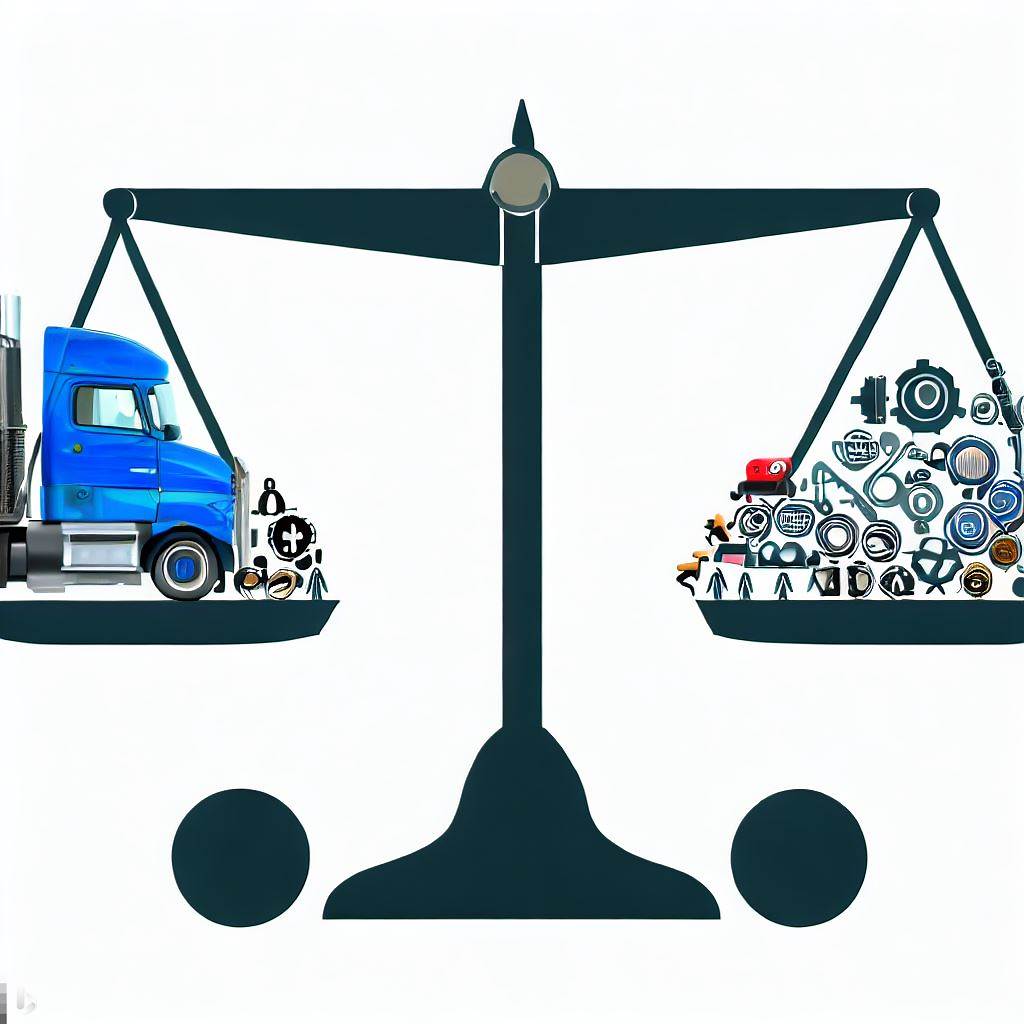
3. Economic Impact
The widespread adoption of autonomous trucks could have both positive and negative effects on the economy.
On the positive side
The implementation of autonomous trucks could lead to cost savings for the industry. This, in turn, could benefit consumers by reducing transportation costs for goods and services. Additionally, these trucks have the potential to increase efficiency in the logistics sector. The result is faster delivery times, and improved supply chain management.
On the negative side
Job losses in the trucking industry could have a detrimental effect on the economy. Mainly for those individuals who rely on truck driving as their primary source of income. Policymakers and industry leaders should consider measures that can support the transition and retraining of workers affected by automation.
“The adoption of autonomous trucks may have short-term effects on jobs in the trucking industry. It also presents an opportunity for innovation, increased efficiency, and improved safety in the long run.”
– Nationwide Auto Transportation
4. Job Creation
While there may be job losses in the trucking industry due to automation, the development and implementation of autonomous trucks will also create new job opportunities. These opportunities will be in areas such as software development, engineering, data analysis, and operations management.
The need for skilled workers in these fields will increase as the technology advances. Resulting in new employment opportunities for those with the right skill sets.
5. Transition Period
It is important to note that the transition to fully autonomous trucks will not happen overnight. It will be a gradual process that will require time for testing, regulatory approvals, and infrastructure development. This transition period allows for adjustments and preparations to be made in the job market. It also allows for the economy to effectively manage the changes brought about by autonomous trucking.
As noted, autonomous trucks have both positive and negative implications for jobs and the economy. It is vital for stakeholders to work together and plan for a smooth transition. They should provide adequate support for workers and create new opportunities in the changing environment.
Technological Advancements in Autonomous Trucking
Technological
Advancements
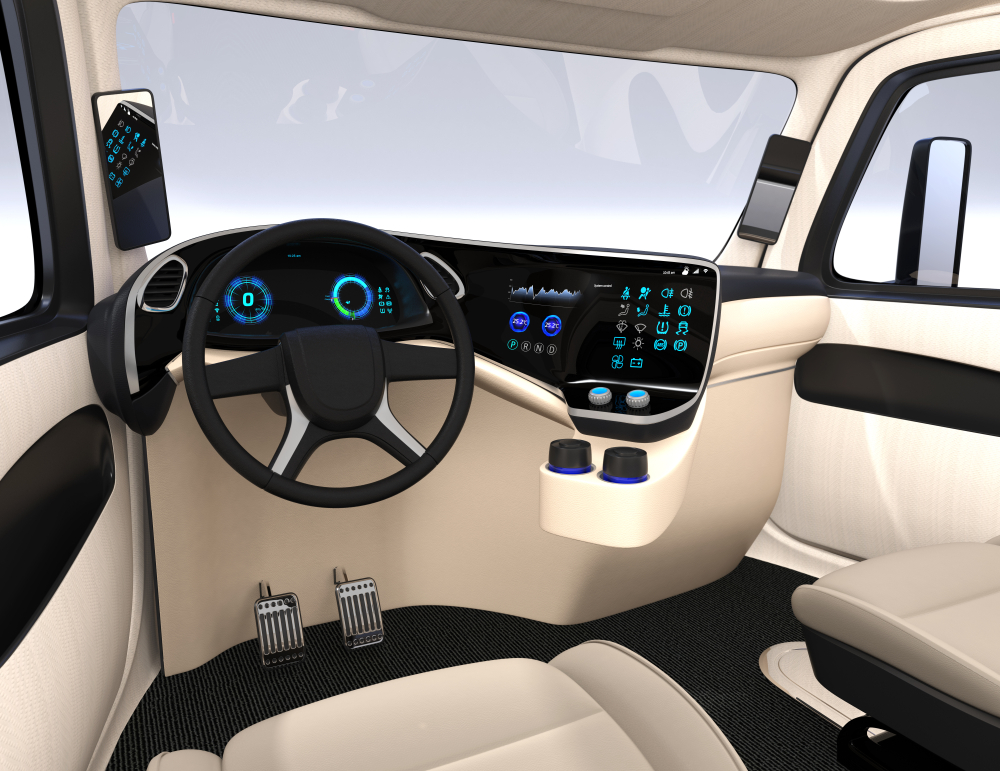
In recent years, autonomous trucking has been making significant strides in the transportation industry. Through technological advancements, such as vehicle-to-vehicle communication and smarter scheduling systems, the dream of self-driving trucks is becoming a reality.
Let’s take a closer look at some of these innovative developments and how they are shaping the future of autonomous trucking.
Vehicle-to-Vehicle Communication
One of the key technological advancements in autonomous trucking is vehicle-to-vehicle (V2V) communication. This technology enables trucks to communicate with each other and share vital information in real-time. By sharing data on speed, direction, and road conditions, autonomous trucks can navigate more efficiently and safely.
V2V communication allows trucks to work together as a collective unit, forming convoys or platoons. By traveling at close distances and synchronizing their movements, these platoons can reduce aerodynamic drag and save fuel.
It’s estimated that platooning could save up to 20% on fuel costs! The result is significant cost savings for trucking companies.
Smarter Scheduling Systems
These systems use advanced algorithms and real-time data to optimize routes, delivery times, and load capacity. So, how do they do it? By analyzing traffic patterns, weather conditions, and other factors, autonomous trucks can take the most efficient routes and avoid delays.
Smarter scheduling systems also enable trucks to adapt on the go. If there is a sudden change in traffic or road conditions, the system can automatically reroute the truck to minimize delays. This flexibility allows autonomous trucks to adapt to unpredictable situations and ensure timely deliveries.
Successful Testing and Implementation
The advancements in autonomous trucking technology have not been limited to theory or prototypes. Companies like TuSimple have successfully tested driverless trucks in real-world conditions. In fact, TuSimple completed the world’s first fully autonomous run. Their truck covering a distance of over 1,000 miles, with a commercial cargo.
These successful tests are a testament to the progress that has been made in developing autonomous trucking technology. With each successful test, the industry is gaining more confidence in the capabilities of autonomous trucks! This means we are moving closer to widespread implementation.
Benefits of Technological Advancements
The technological advancements in autonomous trucking bring numerous benefits to the industry and society as a whole. Here are some of the key advantages:
- Improved Safety. By eliminating human error, autonomous trucks have the potential to significantly reduce accidents and increase road safety.
- Increased Efficiency. Advanced technologies like V2V communication and smarter scheduling systems help autonomous trucks operate more efficiently, saving fuel, reducing congestion, and improving overall logistics.
- Reduced Environmental Impact. Optimized routes and improved fuel efficiency can help reduce greenhouse gas emissions. Now truckers can contribute to a greener future.
- Cost Savings. Operating cost reductions can provide significant savings for trucking companies. At the same time, leading to a more cost-effective transportation industry.
Conclusion | The Bright Road Ahead with Self-Driving Trucks
Self-driving trucks are changing transport. They talk to each other and plan routes well, making trips safer and faster while helping the environment. This is just the start, and the future looks bright.
Paradigm Shift in the Logistics Sector
The logistics sector is currently undergoing a significant paradigm shift with the advent of autonomous trucking. This revolutionary technology is set to transform the industry. It is set to offer numerous benefits and efficiencies.
| Advantages of Autonomous Trucking | Details |
|---|---|
| High Adoption Rate | Around 90% of US manufacturers have adopted autonomous trucking technology, showcasing its potential to transform the logistics industry. |
| Increased Efficiency | Autonomous trucks can operate 24/7 and use smart routing systems to optimize delivery routes, significantly improving time and fuel efficiency. |
| Enhanced Safety | Advanced sensors and AI systems enable autonomous trucks to detect and respond to road hazards. The elimination of human error can significantly reduce accidents. |
| Reduced Costs | Autonomous trucking could reduce operating costs by about 45%, saving the US for-hire trucking industry between $85 billion and $125 billion, and increasing freight capacity. |
| Environmental Impact | Through route optimization and reduced fuel consumption, autonomous trucks contribute to a more sustainable logistics sector by decreasing emissions. |
Steering Towards a Brighter Future
We find ourselves on the cusp of a new era of auto shipping. With that, let’s navigate the burgeoning landscape of autonomous trucking with a measured and optimistic outlook. Yes, it somewhat feels like preparing for a long road trip! Checking that all regulatory road signs are in place, and the highways (or our strategies) are well-paved to accommodate the newcomers on the road.
But this journey, promises to be one of evolution and enhanced efficiency. One where safety isn’t just a benefit, it’s a guarantee. It’s a road where the technological advancements parallel a car shifting from manual to automatic; it just keeps getting smoother and better with each update.
We understand there are speed bumps along the way. Think of achieving public acceptance and fine-tuning infrastructure. Yet, we stand before an open road of opportunities. At this time, they are not only promises to reshape our sector, but elevate it to unprecedented heights.
Let’s embrace this change with open arms, or should we say open roads? Buckle up! Adopting this technology could very well be the vehicle that drives your business into a future of uncharted success and innovation.
Ready to steer toward this bright future with us? The road ahead is clear and inviting, and it’s time we hit the gas!
Revolutionizing Vehicle Shipping | The Road Ahead with Autonomous Trucks
The auto shipping world is rapidly changing, thanks to the exciting emergence of autonomous trucks. These high-tech wonders promise to reshape the industry. With that, bringing new efficiencies and cost-savings that we’ve never seen before. But it’s not just about cool tech and saving bucks! This is a new chapter in logistics. Ultimately, changing how we think about moving vehicles from point A to B.
Yet, it’s not all smooth sailing, we also need to keep an eye on the larger picture. This includes the effects on jobs and the economy as a whole.
At Nationwide Auto Transportation, we’re more than just spectators. We’re active participants! NAT is constantly evolving to harness the latest advances and offer you unparalleled service. We’re here to meet your vehicle shipping needs with the most innovative solutions available.
Keen to keep your finger on the pulse? Our blog is where you’ll find all you need to know about the developments in self-driving cars and the role of artificial intelligence in steering the future of the automotive industry.
Stay with us on this exhilarating road to the future, where autonomous trucks lead the way in revolutionizing auto shipping. It’s a journey you won’t want to miss!
🌟 Ready for a Smooth Ride into the Future? 🌟
Don’t just witness the revolution – be a part of it! At Nationwide Auto Transportation, we are at the forefront! Steer the way with insights and services that are a cut above the rest.
🔹 Get Your Free Shipping Quote Today! 🔹
Unlock unbeatable deals tailored just for you. Tap into transparent pricing and stellar service that takes you places.
🚀 Dive Deeper with Our Blogs 🚀
Become a savvy navigator in the ever-evolving world of auto transportation. Our blog is your go-to destination for the latest buzz and expert takes on trends shaping the industry’s future. Start your journey here!
Nationwide Auto Transportation – Driving the Future, Today!
The Rise of Autonomous Trucks

The rise of autonomous trucking brings about exciting possibilities and opportunities for both businesses and consumers alike.
While there are concerns about job displacement, it’s important to remember that technological advancements often create new job roles and industries.
Nationwide Auto Transportation remains committed to providing exceptional service and evolving with the changing dynamics of the auto shipping industry.
To experience our reliable door-to-door vehicle shipping services, visit Nationwide Auto Transportation today and trust us with all your vehicle transport needs.

Frequently Asked Questions
- What are autonomous trucks?
- Also known as self-driving trucks. These are vehicles equipped with advanced technology and sensors that allow them to operate without human intervention. These trucks can navigate, steer, accelerate, and brake on their own.
- How are autonomous trucks revolutionizing auto shipping?
- This is done by improving efficiency, reducing costs, and enhancing safety. With self-driving trucks, there is no need for a human driver. This eliminates the need for breaks, rest periods, and shifts. Resulting in non-stop transportation of vehicles.
- Are autonomous trucks safe for transportation?
- They undergo extensive testing and are equipped with advanced safety features. Included are radar, lidar, and cameras to ensure safe transportation. While accidents can still occur, self-driving technology has the potential to significantly reduce human error. (Leading cause of accidents on the road).
Self-Driving Trucks / Autonomous Trucks in Auto Shipping
- What are the benefits of using autonomous trucks in auto shipping?
- The benefits in auto shipping include increased fuel efficiency, reduced labor costs, improved delivery times, and enhanced overall supply chain management. These trucks can also operate 24/7, providing faster and more consistent service.
- Are autonomous trucks replacing human truck drivers?
- While autonomous trucks have the potential to reduce the need for human truck drivers, it is unlikely that they will completely replace them. Instead, self-driving technology will likely be used in conjunction with human drivers to improve efficiency and safety in the auto shipping industry.

